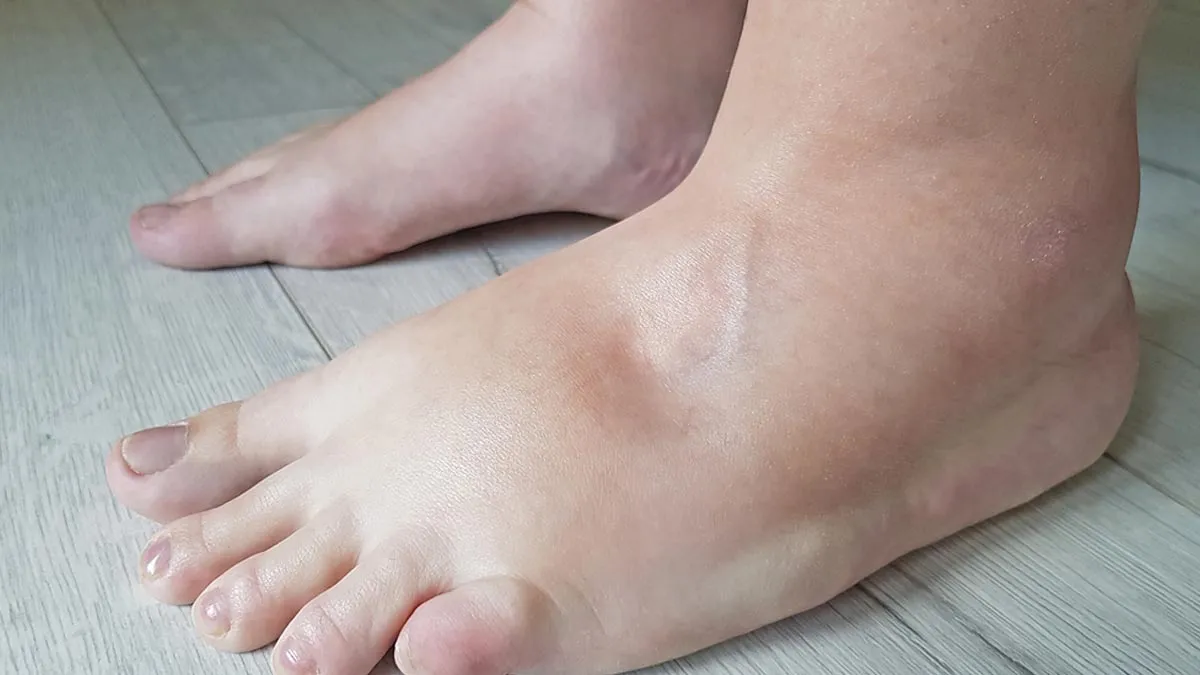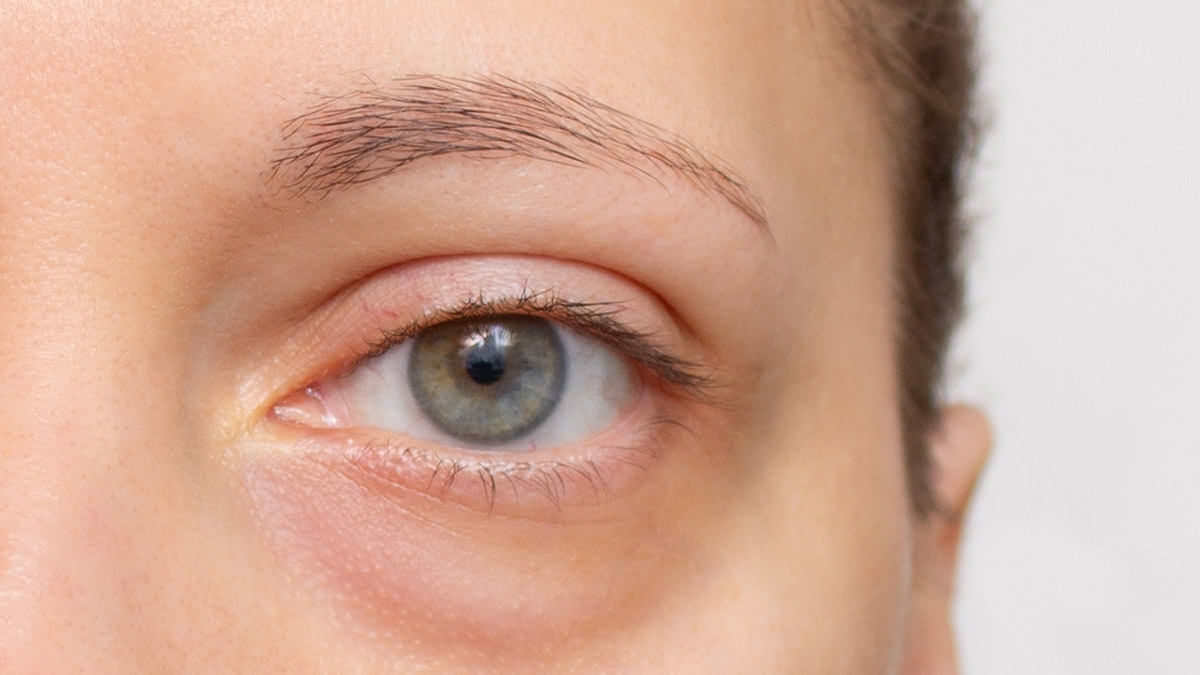
Simple puffiness around the eyes or tired, swollen feet are often attributed to ‘too much salt’ or a long day on one's feet. Sometimes that’s all they are. At other times, these signs indicate a disturbance in the kidney’s filtering system and an opportunity to detect disease early. Paying attention to the pattern and accompanying clues can mean the difference between conservative treatment and preventing serious kidney damage.
Table of Content:-
We spoke to Dr Ratan Jha, Clinical Director and Senior Consultant, Nephrologist & Transplant Physician, CARE Hospitals, Banjara Hills, Hyderabad, who listed hidden signs of kidney disease that often go unnoticed.
Kidney Disease Indicators You Shouldn't Ignore
Puffy Eyes and Where Fluid Goes First

“Periorbital puffiness — the swollen eyelids or ‘puffy eyes’ noticed on waking can be a subtle early signal of low blood protein (albumin) or salt and water shifts that occur when kidneys leak protein.
In children and adults alike, the face and eyelids often show fluid accumulation before the lower legs do, because of gravitational and tissue differences,” said Dr Jha. When this morning puffiness is new, persistent, or comes with other symptoms, it deserves more than a shrug.
Also Read: Ditch The Puffiness: Seasonal Fruits That Help Reduce Water Retention
Watch Out For Frothy Urine
Foamy or frothy urine is not merely an oddity of stream dynamics. According to Clinical Kidney Journal, when protein is present in the urine, it reduces surface tension, causing it to become foamy. Persistent foamy urine is most often due to proteinuria, and patients may recall when this symptom first appeared during their medical history.
“Proteinuria is a hallmark of glomerular injury, the microscopic filters in the kidneys, and is the cardinal feature of conditions, such as nephrotic syndrome. Many patients first notice froth, or find clothes and bedding have more foam than before; this simple observation is a practical red flag that clinicians take seriously,” added Dr Jha.
Swollen Ankles: Veins, Heart, and Kidneys

Swelling in the ankles and lower legs is a common complaint with a long differential. Cardiovascular disease, chronic venous insufficiency, lymphatic problems, and medication side effects all cause leg oedema. Kidneys enter the list when albumin loss or impaired filtration allows fluid to leave the circulation and collect in tissues.
“Distinguishing vascular from renal causes hinges on history and a focused exam — for instance, claudication, varicose veins, unilateral calf pain (suggesting clot) or systemic signs, such as breathlessness or jaundice point away from isolated renal disease,” said Dr Jha.
The syndrome behind the signs: What to Suspect
When oedema pairs with frothy urine and fatigue, nephrotic-range proteinuria is a key consideration. Nephrotic syndrome classically presents with heavy protein loss in urine, low serum albumin, swelling, and often high cholesterol. By contrast, milder increases in albumin (microalbuminuria) may mark early chronic kidney disease and convey cardiovascular risk. Both scenarios warrant objective testing rather than assumptions.
How Clinicians Investigate

“Evaluation begins simply: a urine dipstick or bedside urine albumin test can detect protein quickly. If positive, quantification follows — urine albumin-to-creatinine ratio (ACR) or a protein-to-creatinine ratio on a spot sample are preferred screening tests, while 24-hour collections or specialised assays may be used in selected cases,” said Dr Jha.
Blood tests assess kidney function (serum creatinine, estimated GFR), albumin level, lipids, and electrolytes. Imaging or referral to nephrology is guided by severity, rapidity of onset, and presence of red flags, such as haematuria, declining kidney function, or systemic illness.
Also Read: When Kidney Infections Don't Respond To Antibiotics: What It Means And What To Do About It?
Basic Management Principles: What Can Be Done Early
Initial management
- Address symptoms and the underlying mechanism
- Salt restriction
- Leg elevation to reduce swelling
- Compression therapy (under clinical guidance, suitable for venous causes but not arterial disease)
Medications
ACE inhibitors or ARBs for proteinuric kidney disease:
- Reduce protein loss
- Slow disease progression
- Diuretics to relieve oedema
Primary disease treatment:
Central to long-term outcomes
Examples
- Glomerulonephritis
- Diabetic kidney disease
- Other underlying causes
Red Flags that Require Urgent Care
Seek prompt medical attention if you experience:
- Sudden, one-sided leg swelling (possible deep-vein thrombosis)
- Breathlessness or chest pain
- Rapidly worsening oedema
- Reduced urine output
- Signs of infection over swollen areas
Bottomline
Dr Jha concluded, “A single swollen ankle or an occasional puffy morning face is often benign. Persistent or progressive swelling, especially when accompanied by foamy urine, unexplained fatigue, or abnormal blood tests, should prompt testing. A quick urine dipstick and a few blood tests frequently clarify whether the kidneys are involved, allowing timely treatment that preserves kidney function and avoids complications. Early attention turns a vague nuisance into a manageable medical problem.”
[Disclaimer: This article contains information provided by an expert and is for informational purposes only. Hence, we advise you to consult your professional if you are dealing with any health issue to avoid complications.]
How we keep this article up to date:
We work with experts and keep a close eye on the latest in health and wellness. Whenever there is a new research or helpful information, we update our articles with accurate and useful advice.
Current Version
